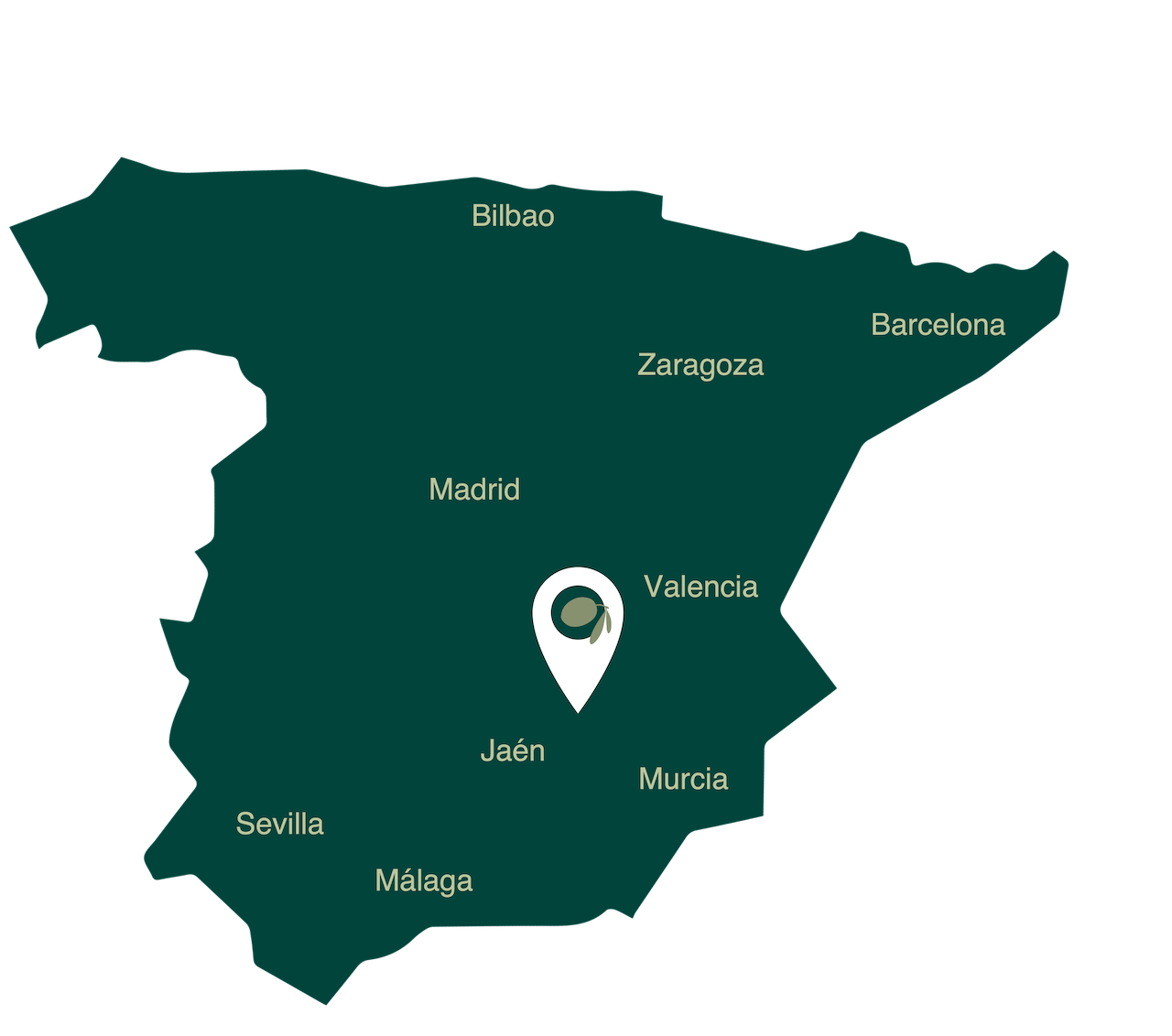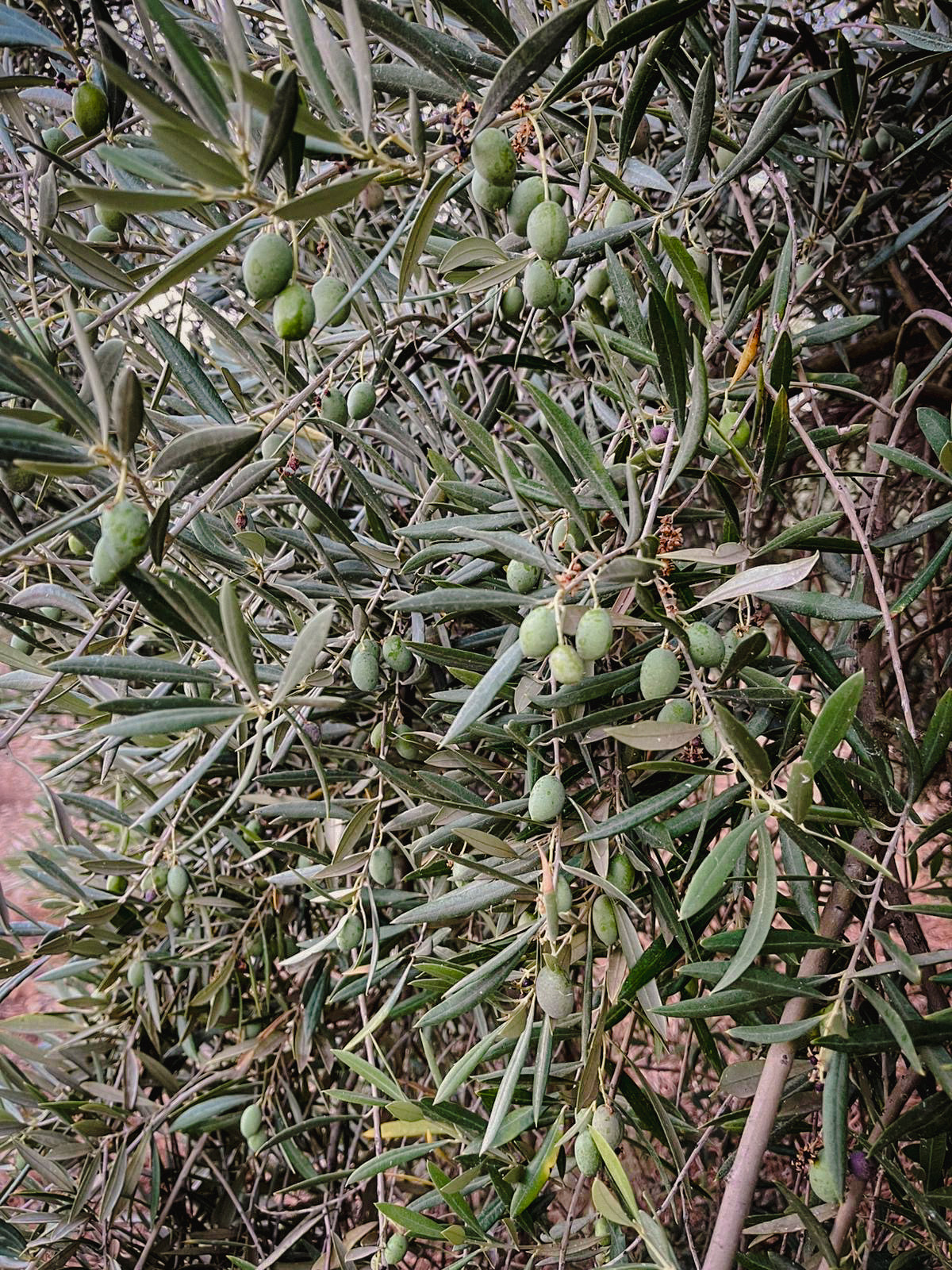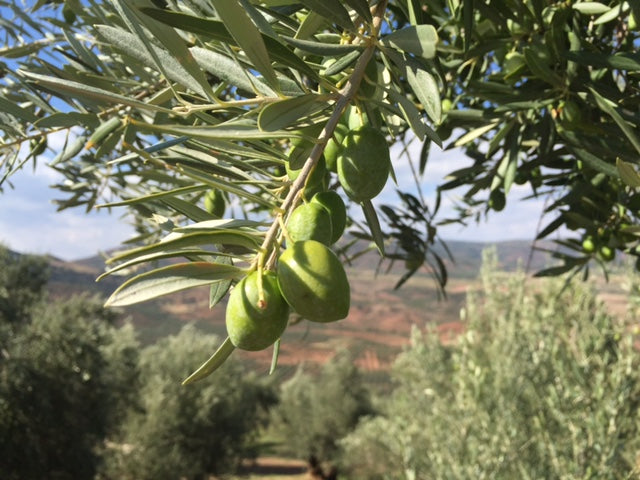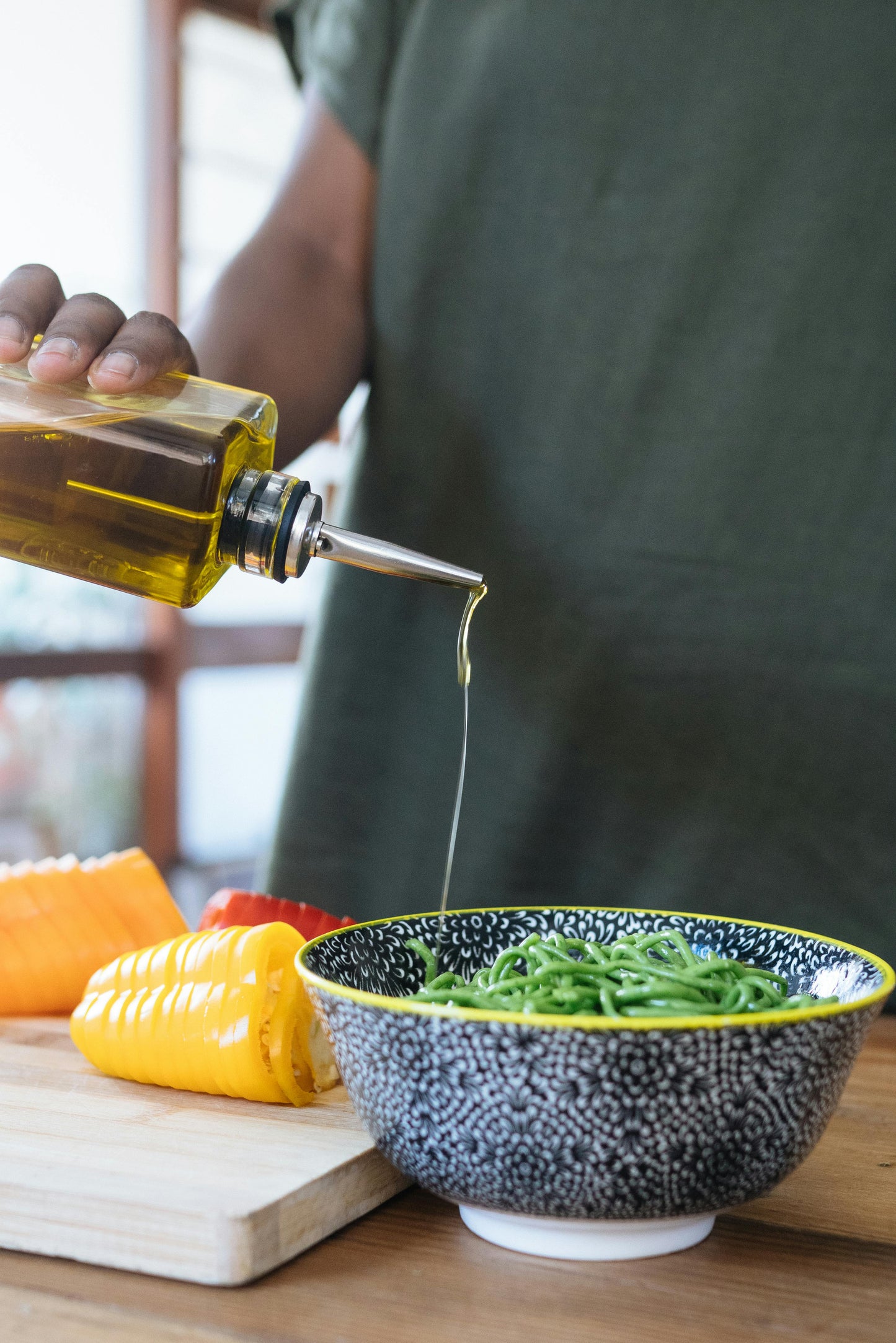
About the extra virgin olive oil
On this page I would like to explain where this special extra virgin organic olive oil comes from and which olive it is made from.

Get to know Jaen and the Sierra de Segura
The Andalusian province of Jaén is known both in Spain and abroad for its many olive trees. For as long as I can remember, you can see olive trees growing in long, well-organized rows as far as the eye can see. A whopping 25% of all Spanish olive oil comes from the province of Jaén, making it one of the largest olive oil-producing areas in the world. The Picual olive is the most widely grown variety in the province of Jaén.

To the east of Jaén lies the mountainous region of Sierra de Segura; this is my father's birthplace and where a large part of my family still lives.
What makes this area unique is its much more mountainous nature compared to other olive growing regions in Jaén and the rest of Spain. The more challenging terrain makes harvesting more difficult and labor-intensive, meaning greater attention is paid to the quality of the olives during the growing and harvesting periods.
Olive oil from this region has a Dominacion de Origen ( Domination of Origin) certificate, guaranteeing its origin. This also means that no olive oil from any other region is blended.

Picual olive and quality
The extra virgin (organic) olive oil from the Sierra de Segura is made from the Picual olive.
The organic Picual olive is exactly the same olive, only the organic variety is grown without artificial fertilizers or chemical synthetic pesticides, and the farming, harvesting, pressing, and bottling must meet strict conditions to be certified organic.
Verde Segura and Saqura are both also made from Picual olives. These are picked early in the harvest season when the olives are still young and green. This results in a very refined and balanced green olive oil.
The Picual olive is one of the most widely cultivated olive varieties in Spain. It is naturally rich in antioxidants (polyphenols). Olive oil from the Picual olive is therefore highly resistant to oxidation and remains stable when cooked at higher temperatures.
Due to the high amount of antioxidants, the taste of this olive oil is slightly bitter in the throat, which is characteristic of high-quality extra virgin olive oil.

The olive oil I offer is extra virgin.
This means that this olive oil is from the first cold pressing, has no additives, and has a maximum acidity of 0.8. The cold extraction process preserves vitamins and minerals in the oil; they are not affected by the pressing.
Incidentally, acidity says nothing about the taste of the olive oil; it's a result of how quickly the farmer has his olives pressed after harvest. The sooner after harvest the oil is pressed from the freshly picked olives, the lower the acidity will be, a reward for all the hard work.
The Oro de Genave, Saqura, and Verde Segura have an acidity of 0.2% or less. The Senorio has an acidity of 0.3% or less.

Why is the early harvest olive oil more expensive than the regular harvest?
I'm often asked why Verde Segura , Saqura , and Arte Oleum are better than traditional olive oils like Oro de Genave . I'd like to answer that question.
These olive oils come from an early harvest, which runs from mid-October to November. The olives are not yet fully mature, not yet ripe, and still green. I compare this to tomatoes; when tomatoes are not yet ripe, they are green. As the tomatoes ripen, they turn red.
The result of this in olive oil is that the olives have even higher amounts of antioxidants and polyphenols and a lovely fresh taste.
The downside is that because they are not yet fully mature, twice as many olives are needed to produce olive oil. For example, early-harvest olive oils require a whopping 8 to 10 kilos of olives to produce 1 liter of olive oil. This naturally makes this olive oil more expensive than traditional olive oil.

Is olive oil good for your health?
Several years ago, scientists discovered that olive oil contains several ingredients that are beneficial to health when consumed as part of a healthy lifestyle. This has been recognized by the European Union, meaning these health benefits may be mentioned when making health claims about olive oil to promote consumer awareness.
The European Union recognizes the following health effects:
1. Replacing saturated fats in the diet has been shown to lower blood cholesterol. High cholesterol is a risk factor for the development of coronary heart disease. Olive oil consists of 70 percent oleic acid and linoleic acid, both of which are unsaturated fats. Because this represents over 20% of the product's energy value, the legal requirements for using this health claim are met. However, we must remember that coronary heart disease has multiple risk factors, and that changing one of these factors may or may not have a beneficial effect.
2. Replacing saturated fats in the diet with unsaturated fats contributes to the maintenance of normal blood cholesterol levels. Oleic acid is an unsaturated fat.
3. Polyphenols from olive oil contribute to the protection of blood fats against oxidative stress
4. Olive oil is a source of Vitamin E. Vitamin E contributes to the protection of cells from oxidative stress.
Read more about this in our blog post on the Health Benefits of Olive Oil


